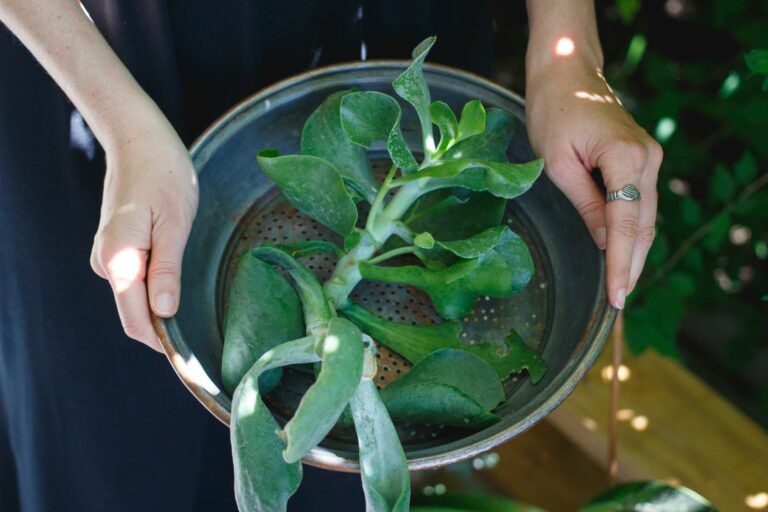Those thriving, beautiful succulents in your home can die from overwatering or under watering. Even though under watering is a problem, it’s not common compared to overwatering. Most people prefer to give a plant more water instead of less water.
That’s why you get an overwatered succulent plant dying from a group of beautiful succulents. Naturally, you can save an overwatered succulent plant if you cut down on watering immediately after you notice the problem.
But sometimes, it’s too late to save an overwatered succulent if the damage is done. So, how do you know a succulent is dying from overwatering, or when to start reviving the succulent?
Don’t worry; here we are going to explain if you can save an overwatered succulent and how to do it on time before the plant dies.
Can you save an overwatered succulent plant?
Yes. It’s easy to save an overwatered succulent by practicing proper care and maintenance. It’s as easy as you are thinking right now. You can only have a hard time if the root has started rotting.
Root rot is caused by overwatering. When overwatering has exceeded its limit, the roots start to rot and, in turn, affect other parts of the plant. At this stage, you can think of how much of a plant you can save.
It’s easy to save an overwatered succulent when you find the problem in its early stages. If you think about it, if you are caring for your succulent, you can find this problem before it spreads to the roots.
What are the signs of an overwatered succulent?
Most people don’t find an overwatered plant until it’s late because they don’t know what it looks like or its signs. Usually, some signs can tell you a succulent is being overwatered.
Here are the signs of an overwatered succulent plant.
- Clogged soil
When you give the plant excess water, the soil absorbs the required amount and drains off excess through drainage holes. If the drainage holes aren’t working, the excess water remains stagnant at the top, leaving it wet. The soil will form clumps instead of separate grains of soil.
That’s the first sign that your plant is overwatered. Use your finger to feel the soil if it’s wet.
Let the soil dry completely before you start watering.
- Leaves change color
Excess water can lead to leaves changing colors and starting to look translucent. This happens because the plants absorb excess water. The water is stored in the leaves. After some time, the leaves can’t handle the extra water, and the cells start to burst. The water from the cells runs through the leaves, diluting their color and making them squishy.
Soon, the succulent leaves will start to rot, and the leaves will fall off the plant.
To save an overwatered succulent plant, you must recognize the change in color before it affects the rest of the plant. Usually, it affects the lower parts of the leaves as it moves up the plant.
- The plant has a sick appearance.
You can tell the difference between a healthy and a sick succulent. When you notice it, it’s probably from overwatering or sitting on soil that doesn’t dry fast enough.
Act fast to save the plant.
What does a rotting succulent look like?
When a succulent rots, it will have black leaves. The most affected leaves will be at the bottom, as the rotting moves to the top leaves. The steams will turn black or brown.
Both the leaves and stems will appear mushy and translucent. The leaves can fall off with a single touch.
How do you save an overwatered succulent?
The earlier you start saving a plant, the higher the chances of survival. Check how far the problem has gone before you try to save it.
There are different ways you can save an overwatered succulent plant. Here are the best methods to use.
Stop watering
The first order of action is to stop overwatering and let the plant sit for a few days until the soil is completely dry. If you find the problem in its early stages, you can save it by letting the soil dry.
Succulents can survive one to two weeks without water. So, you can stop watering to see if the plant will recover. If it doesn’t recover, the roots have been affected, and you must remove them from the soil.
Move away from the sun.
When a plant receives excess water, it becomes stressed. Placing it in direct sunlight will only add extra stress to it. So, move to an area with indirect sunlight as it tries to recover from the water.
When it’s trying to recover, avoid watering until it has recovered.
Dry the roots
It involves removing the plant from the soil and exposing the roots to air. Check the roots if they are rotten. Rotten roots are brown or black. Cut any affected part of the root using a sharp garden knife.
Place the plant on a mesh for two to three days till the roots have dried completely. After drying, repot them into fresh soil.
Propagation
You can propagate the leaves or stem of a succulent if all the roots are affected. Sometimes you can only save the plant by growing it from scratch.
How to save a rotting succulent plant
Sometimes, it is late, and the roots are rotting in the soil. When this happens, you need a new approach to save an overwatered succulent. Here are steps on how to save a rotting succulent.
- Once you determine the roots are rotten, remove the plant from the soil and let it dry.
- Check the root rot and determine its severity. It’s severe if all the roots have been affected.
- If the rot has affected a few leaves, cut off any rotten roots and leave as many healthy roots as possible.
- Let the roots dry completely before you return them to the pot.
- You can change the soil to avoid contamination. If you don’t want to change the soil, you can spread it on a flat surface to dry.
- Repot the plant and give it minimal water to keep the soil moist.
You can also save the plant by propagating healthy leaves or stems. Use this option if all the roots are rotten.
How to avoid overwatering succulents
Since it’s not easy to save an overwatered succulent, the best option is to prevent overwatering from happening. That requires that you provide good care to your succulents. Here is how you can care for succulents to avoid overwatering.
- Use well-draining soil to plant succulents. Soil with good drainage ensures that excess water drains through the bottom drainage holes.
- Water succulents when the soil is dry. Watering every time you think a plant needs water can lead to problems. Purchase a moisture meter to check moisture content before you start watering.
- Monitor the succulents by touching the leaves to make sure they are not storing excess water.
- Check your plant roots periodically to ensure they are healthy.
- Improve the drainage of your container. You can do this by either using a larger pot or adding 2 inches of gravel to the bottom of the container.
Summary
It’s easy to save an overwatered succulent if you find the problem in its early stages. So, if you are a good caregiver, you will likely notice it before it goes any further. Start saving once you find it, don’t start procrastinating. That will only lead to a further problem, making it hard to save the plant.






